This article was co-authored by Jonathan Frank, MD. Dr. Jonathan Frank is an Orthopedic Surgeon based in Beverly Hills, California, specializing in sports medicine and joint preservation. Dr. Frank's practice focuses on minimally invasive, arthroscopic surgery of the knee, shoulder, hip, and elbow. Dr. Frank holds an MD from the University of California, Los Angeles School of Medicine. He completed an orthopedic residency at Rush University Medical Center in Chicago and a fellowship in Orthopedic Sports Medicine and Hip Preservation at the Steadman Clinic in Vail, Colorado. He is a staff team physician for the US Ski and Snowboard Team. Dr. Frank is currently a scientific reviewer for top peer-reviewed scientific journals, and his research has been presented at regional, national, and international orthopedic conferences, winning several awards including the prestigious Mark Coventry and William A Grana awards.
There are 9 references cited in this article, which can be found at the bottom of the page.
This article has been viewed 325,918 times.
A broken bone, or fracture, is a significant and traumatic injury that requires medical attention. However, getting timely first aid from trained health professionals is not always possible — some situations may delay medical care for many hours or days. Even in developed countries, the average person sustains two broken bones during their lifetime, so they are not rare occurrences. As such, it's important to know how to provide first aid for broken bones in order to help yourself, your family, or others who find themselves in emergency situations.
Steps
Providing Initial Help
-
1Assess the injured area. In an emergency situation with no trained medical people around, you need to quickly assess the seriousness of the injury. Trauma from a fall or accident coupled with severe pain is not a guarantee of a broken bone, but it's usually a pretty good indicator. Fractures involving the head, spine, or pelvis are difficult to tell without an x-ray, but you suspect a break in one of these areas you should not attempt to move the person. Bones in the arms, legs, fingers, toes, and nose will typically look crooked, misshapen or obviously out of place when broken.[1] A severely broken bone might poke out through the skin (open fracture) and involve profuse bleeding.
- Other common symptoms of broken bones include: limited use of the injured area (reduced mobility or unable to put any weight on it), immediate local swelling and bruising, numbness, or tingling downstream from the break, shortness of breath, and nausea.
- Be very careful when assessing the injury not to cause much movement. Moving a person with an injured spine, neck, pelvis or skull is very risky without medical training and should be avoided.
-
2Call for emergency help if the injury is severe. Once you've established that the injury is serious and suspect that a broken bone is likely, then call 9-1-1 for an ambulance and get professional medical help on their way as quickly as you can.[2] Providing immediate rudimentary first aid and supportive care are certainly helpful, but it's no substitute for trained medical attention. If you are close to a hospital or emergency clinic and are quite certain the injury is not life-threatening and only involves a limb, then consider driving the injured person to the facility.
- Even if you think your fracture is not life-threatening, resist the urge to drive yourself to the hospital. You may not be able to operate your vehicle properly or may lose consciousness from the pain and become a road hazard.
- If the injury appears severe, stay on the line with the 9-1-1 dispatcher in case conditions get worse in order to get helpful instructions and emotional support.
- Call emergency services if you notice the following: call for emergency help if The person is unresponsive, isn't breathing, or isn't moving; there is heavy bleeding; gentle pressure or movement causes pain; the limb or joint appears deformed; the bone has pierced the skin; the extremity of the injured arm or leg, such as a toe or finger, is numb or bluish at the tip; you suspect a bone is broken in the neck, head or back.[3]
Advertisement -
3Provide CPR if necessary. If the injured person is not breathing and you can't feel a pulse on her wrists or neck, then start administering cardiopulmonary resuscitation (if you know how to) before the ambulance arrives.[4] CPR involves clearing the airways, blowing air into the mouth / lungs, and trying to restart the heart by rhythmically pushing on the chest.
- A lack of oxygen for much more than five to seven minutes causes, at least, some degree of brain damage, so time is of the essence.
- If you're not trained in CPR, then provide hands-only CPR — uninterrupted chest compressions at a rate of about 100 per minute until paramedics arrive.[5]
- If you're well-trained in CPR, begin with chest compressions immediately (about 20 – 30) and then check the airway for obstruction and start doing rescue breathing after tilting the head back at a slight angle.[6]
- For a spine, neck, or skull injury, do not use the head-tilt-chin-lift method. Use the jaw-thrust method of airway opening, but only if you have been trained on how to do so. The jaw-thrust method involves kneeling behind the person and placing a hand on either side of her face, middle, and index fingers beneath and behind the jaw. Push each side of the jaw forward until it juts out.
-
4Stop any bleeding. If the injury is bleeding significantly (more than a few drops), then you must attempt to stop it regardless if there is a fracture or not. Significant bleeding from the main artery can lead to death within a few minutes. Controlling the bleeding is a higher priority than addressing a broken bone. Apply firm pressure to the wound with a sterile and absorbent bandage (ideally), although a clean towel or piece of clothing will do in an emergency.[7] Hold it there for a few minutes to encourage the blood to clot at the injury site. Secure the bandage around the wound with an elastic bandage or piece of cloth if you can.
- If the bleeding won't stop from an injured limb, you may have to tie a tight tourniquet above the wound to temporarily cut off the circulation until medical help arrives. A tourniquet can be made of virtually anything that can be secured tight — string, rope, cord, rubber tubing, leather belt, necktie, scarf, tee-shirt, etc.
- If there is a large object penetrating into the skin, do not remove it. It may be clotting the wound, and removing it could cause severe bleeding.
Addressing the Broken Bone
-
1Immobilize the broken bone. After the injured person is stabilized, it's time to immobilize the broken bone if you anticipate a wait of an hour or longer for emergency medical personnel.[8] Immobilizing it can help reduce the pain and protect the broken bone from further injury caused by inadvertent movement. If you don't have proper training, don't try to realign the bone. Attempting to align broken bones improperly can lead to further damage to blood vessels and nerves, leading to potential bleeding and potential paralysis. Keep in mind that splints only work for limb bones, not those of the pelvis or torso.
- The best method of immobilization is to make a simple splint. Place a piece of stiff cardboard or plastic, a branch or stick, a metal rod, or rolled up newspaper/magazine on either side of the injury to support the bone.[9] Tie these supports together firmly with tape, string, rope, cord, rubber tubing, leather belt, necktie, scarf, etc.
- When splinting a fractured bone, try to allow movement in the adjacent joints and don't secure it too tight — allow appropriate blood circulation.
- Splinting may not be necessary if emergency services are coming right away. In this case, splinting may cause more harm than good if you don't have the appropriate training.
-
2Apply ice to the injury. Once the broken bone is immobilized, apply something cold (preferably ice) to it as soon as you can while you wait for the ambulance.[10] Cold therapy has many benefits, including numbing the pain, reducing inflammation / swelling and reducing bleeding by causing the arteries to constrict.[11] If you don't have ice handy, consider using frozen gel packs or bags of vegetables, but make sure to wrap anything cold in a thin cloth in order to avoid ice burn or frostbite.
- Apply ice for about 20 minutes or until the area is completely numb before removing it. Compressing it against the injury may help reduce swelling even more as long as it doesn't increase the pain.
-
3Keep calm and watch for signs of shock. Breaking a bone is very traumatic and painful. Fear, panic, and shock are all common reactions, but they can have negative consequences for the body, so they must be controlled. As such, calm yourself and/or the injured person by reassuring him that help is on the way and the situation is under control. As you wait for help, cover the person to keep him warm and hydrate him if they are thirsty. Keep talking to him to distract him from focusing on his injury.
- Signs of shock include: feeling faint / dizzy, pale complexion, cold sweats, rapid breathing, increased heart rate, confusion, irrational panic.[12]
- If it looks like the person is in shock, lay him down with his head supported and elevate his legs. Keep him covered with a blanket or jacket, or even a table cloth if those things are not available.
- Shock is dangerous because blood and oxygen are routed away from vital organs.[13] This physiological state, if left untreated, can ultimately cause organ damage.
-
4Consider pain medication. If the wait for emergency medical personnel is longer than an hour (or you anticipate it being a long wait), then consider taking / giving some medication, if you have any, to control the pain and make the wait more tolerable. Acetaminophen (Tylenol) is the painkiller most appropriate for broken bones and other internal injuries because it doesn't "thin" the blood and promote more bleeding.
- Over-the-counter anti-inflammatories such as aspirin and ibuprofen (Advil) are helpful for pain and inflammation, but they inhibit blood clotting, so they aren't a good idea for internal injuries such as broken bones.
- In addition, aspirin and ibuprofen should not be given to young children, because they may cause dangerous side effects.
Expert Q&A
-
QuestionHow do you apply ice to a broken bone?
 Jonathan Frank, MDDr. Jonathan Frank is an Orthopedic Surgeon based in Beverly Hills, California, specializing in sports medicine and joint preservation. Dr. Frank's practice focuses on minimally invasive, arthroscopic surgery of the knee, shoulder, hip, and elbow. Dr. Frank holds an MD from the University of California, Los Angeles School of Medicine. He completed an orthopedic residency at Rush University Medical Center in Chicago and a fellowship in Orthopedic Sports Medicine and Hip Preservation at the Steadman Clinic in Vail, Colorado. He is a staff team physician for the US Ski and Snowboard Team. Dr. Frank is currently a scientific reviewer for top peer-reviewed scientific journals, and his research has been presented at regional, national, and international orthopedic conferences, winning several awards including the prestigious Mark Coventry and William A Grana awards.
Jonathan Frank, MDDr. Jonathan Frank is an Orthopedic Surgeon based in Beverly Hills, California, specializing in sports medicine and joint preservation. Dr. Frank's practice focuses on minimally invasive, arthroscopic surgery of the knee, shoulder, hip, and elbow. Dr. Frank holds an MD from the University of California, Los Angeles School of Medicine. He completed an orthopedic residency at Rush University Medical Center in Chicago and a fellowship in Orthopedic Sports Medicine and Hip Preservation at the Steadman Clinic in Vail, Colorado. He is a staff team physician for the US Ski and Snowboard Team. Dr. Frank is currently a scientific reviewer for top peer-reviewed scientific journals, and his research has been presented at regional, national, and international orthopedic conferences, winning several awards including the prestigious Mark Coventry and William A Grana awards.
Sports Orthopedic Surgeon & Joint Preservation Specialist While applying ice, make sure the broken bone is elevated in order to combat swelling and slow down bleeding (if applicable).
While applying ice, make sure the broken bone is elevated in order to combat swelling and slow down bleeding (if applicable).
Warnings
- Do not move a victim whose back, neck or head are injured unless absolutely necessary. If you suspect a back or neck injury and must move the victim, keep the back, head, and neck well supported and aligned. Avoid any kind of twisting or misalignment.⧼thumbs_response⧽
- This article should not be regarded as a substitute for medical care. Always make sure that medical attention is provided to the injured person even after having followed the steps outlined above, as broken bones can be life-threatening injuries.⧼thumbs_response⧽
References
- ↑ https://www.nlm.nih.gov/medlineplus/ency/article/000001.htm
- ↑ https://www.nhs.uk/common-health-questions/accidents-first-aid-and-treatments/how-do-i-know-if-i-have-broken-a-bone/
- ↑ http://www.mayoclinic.org/first-aid/first-aid-fractures/basics/art-20056641
- ↑ https://www.betterhealth.vic.gov.au/health/conditionsandtreatments/cardiopulmonary-resuscitation-cpr
- ↑ https://www.betterhealth.vic.gov.au/health/conditionsandtreatments/cardiopulmonary-resuscitation-cpr
- ↑ https://www.redcross.org/take-a-class/cpr/performing-cpr/hands-only-cpr
- ↑ http://www.mayoclinic.org/first-aid/first-aid-fractures/basics/art-20056641
- ↑ http://www.mayoclinic.org/first-aid/first-aid-fractures/basics/art-20056641
- ↑ https://medlineplus.gov/ency/article/000040.htm
- ↑ Jonathan Frank, MD. Sports Orthopedic Surgeon & Joint Preservation Specialist. Expert Interview. 31 July 2020.
- ↑ https://www.mayoclinic.org/first-aid/first-aid-fractures/basics/art-20056641
- ↑ https://www.betterhealth.vic.gov.au/health/conditionsandtreatments/shock
- ↑ https://www.betterhealth.vic.gov.au/health/conditionsandtreatments/shock
About This Article
If you or someone near you has broken a bone, call emergency services immediately. Then, while you wait, start by immobilizing the broken bone with a simple splint. The splint can be a piece of stiff cardboard, a metal rod, or even a rolled up magazine on either side of the injury to support the bone. When the splint is in place, secure it with string, rope, cord, or a belt. Just make sure the splint isn’t too tight so blood can still circulate. Next, elevate the injury and apply ice for about 20 minutes to numb the pain and reduce inflammation. While ice works best, anything cold, like frozen vegetables, will work as long as you wrap it in a thin cloth to avoid ice burn. For more help from our Medical co-author, including how to recognize signs of shock, read on.

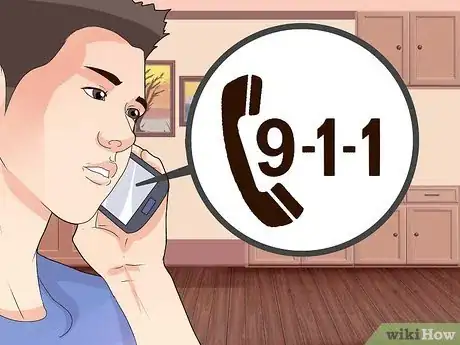
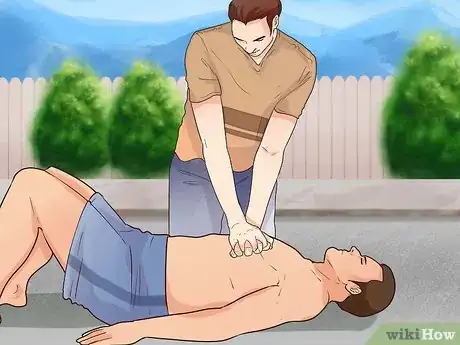
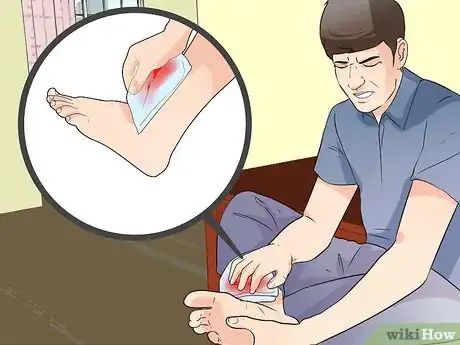
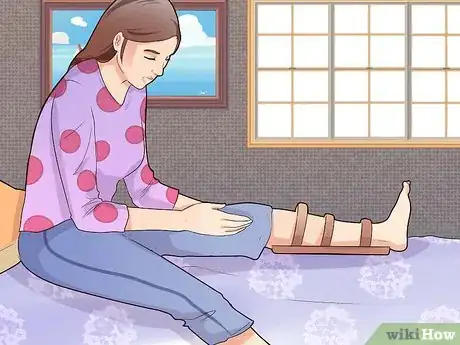
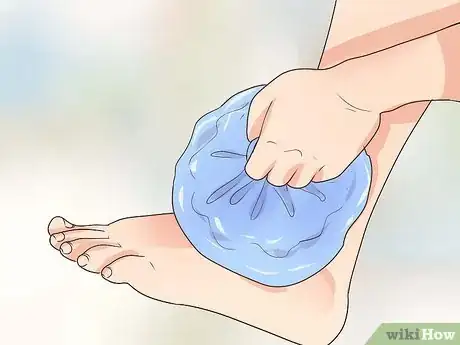

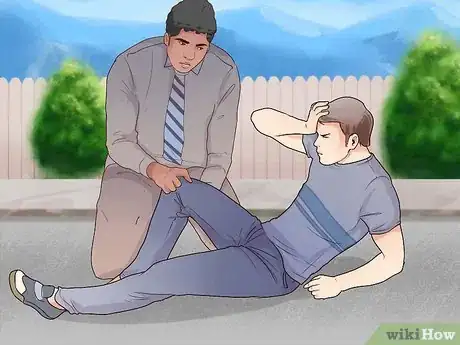
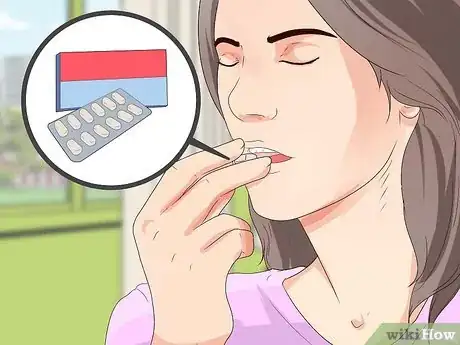
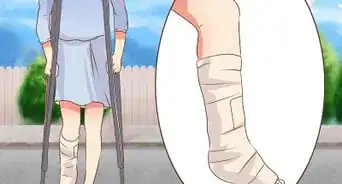
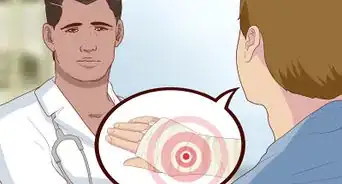
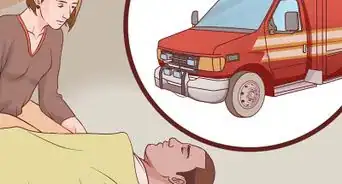
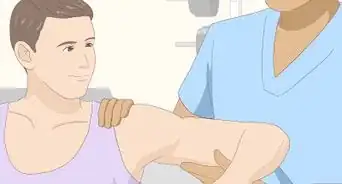
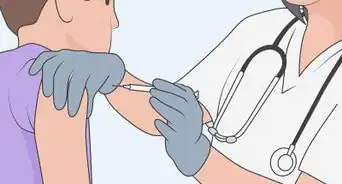
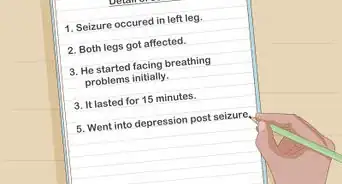




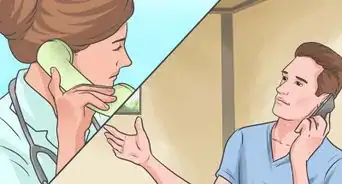
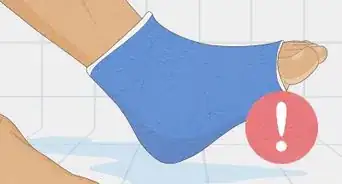

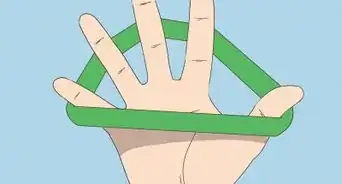










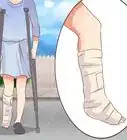

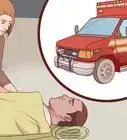
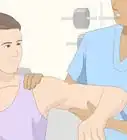




































Medical Disclaimer
The content of this article is not intended to be a substitute for professional medical advice, examination, diagnosis, or treatment. You should always contact your doctor or other qualified healthcare professional before starting, changing, or stopping any kind of health treatment.
Read More...